Have you ever found yourself wondering why goats seem to pop up in so many myths, legends, and cultural symbols across the globe? You’re not alone in your curiosity! From the misty depths of ancient history to the bustling farm yards of modern day, these plucky creatures have consistently captured our imaginations and hearts.
In this comprehensive guide, we’ll embark on an exciting journey to explore the rich tapestry of goat symbolism that spans cultures, continents, and centuries. So, get ready to discover why these horned heroes are so much more than just farm animals – they’re powerful symbols of strength, fertility, wisdom, and even divinity!
The Goat
Before we dive into the symbolism, let’s take a moment to appreciate the goat for what it is: a remarkable creature that has been by humanity’s side for thousands of years. Domesticated around 10,000 years ago, goats were among the first animals to join us on our journey from hunter-gatherers to settled agriculturalists. Their hardiness, adaptability, and usefulness quickly made them indispensable to human societies around the world.
Goats are members of the Capridae family, which includes sheep and other hoofed mammals. Known for their agility, intelligence, and sometimes mischievous behavior, goats have a reputation for being both helpful and troublesome – a duality that often shows up in their symbolic meanings.
From the nimble mountain goats scaling seemingly impossible cliffs to the domestic goats cleverly opening latches on farm gates, these animals have always impressed us with their capabilities. It’s no wonder that over time, we’ve imbued them with a wide range of symbolic meanings, often reflecting our own hopes, fears, and understanding of the world around us.
Popular Goat Symbolism Around The World
Now that we’ve established the goat’s place in human history, let’s dive into the fascinating world of goat symbolism. From the rugged mountains of Tibet to the rolling hills of Ireland, goats have played starring roles in human society. They’ve been our loyal companions, our sources of food, and even our spiritual guides. It’s no wonder that goat symbolism is as varied and interesting as the breeds themselves!
1. Nourishment
When you think of goats, what’s the first thing that comes to mind? For many, it’s probably a tall glass of creamy goat’s milk or a chunk of tangy goat cheese. And you’d be right on the money! Goats have been providing nourishment to humans for thousands of years, making them powerful symbols of sustenance and abundance.
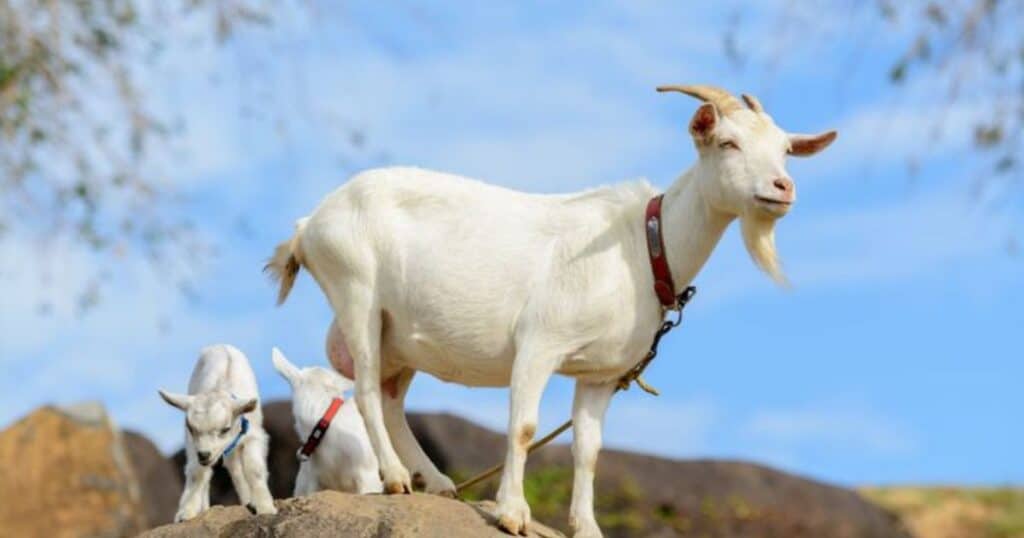
The Goat’s Gift
Goat’s milk has been a staple food in many cultures for millennia. It’s not just delicious; it’s also packed with nutrients and easier for many people to digest than cow’s milk. In fact, some historians believe that the ability to digest milk as adults (lactase persistence) evolved in humans partly due to our long history of consuming goat’s milk.
But the goat’s nourishing gifts don’t stop at milk. These versatile animals also provide:
- Meat: A lean source of protein that’s popular in many cuisines around the world.
- Cheese: From the soft chèvre of France to the hard manchego of Spain, goat cheese is a culinary delight.
- Fiber: Goat hair, particularly from breeds like the Angora goat, is used to make mohair and cashmere.
- Leather: Goatskin has been used for centuries to make everything from clothing to water containers.
Symbols of Abundance and Wealth
In many cultures, goats symbolize abundance and prosperity. They’re hardy creatures that can thrive in harsh conditions, providing food and resources even when times are tough. This ability to nourish and sustain has made goats powerful symbols of life-giving energy.
Consider this: in some parts of Africa, a family’s wealth is measured by the number of goats they own. It’s not just about having a cute pet it’s about having a living, breathing source of food and income. Goats are like furry, four-legged savings accounts!
This association with wealth and abundance reflects in many languages and idioms. For example, the English phrase “to get someone’s goat” (meaning to annoy or irritate someone) likely comes from the practice of placing goats with racehorses to keep them calm.
Stealing the goat would upset the horse and possibly cause it to lose the race a significant financial blow to the owner.
Goats in Medicine and Ritual
The nourishment provided by goats goes beyond just physical sustenance. In many traditions, goat’s milk is believed to have healing properties. Some ancient cultures even used goat’s milk in religious ceremonies, seeing it as a divine gift.
In Ayurvedic medicine, goat’s milk is considered beneficial for various ailments and is often recommended as part of a healing diet. The ancient Greeks associated goats with the god of medicine, Asclepius, and goats were often sacrificed in healing rituals.
Today, modern science is catching up, recognizing the nutritional benefits of goat’s milk. It’s often easier to digest than cow’s milk and is being studied for its potential health benefits, including anti-inflammatory properties.
Read More About : Scorpion Symbolism in Cultures and Arts Around The World
Sexual Fertility
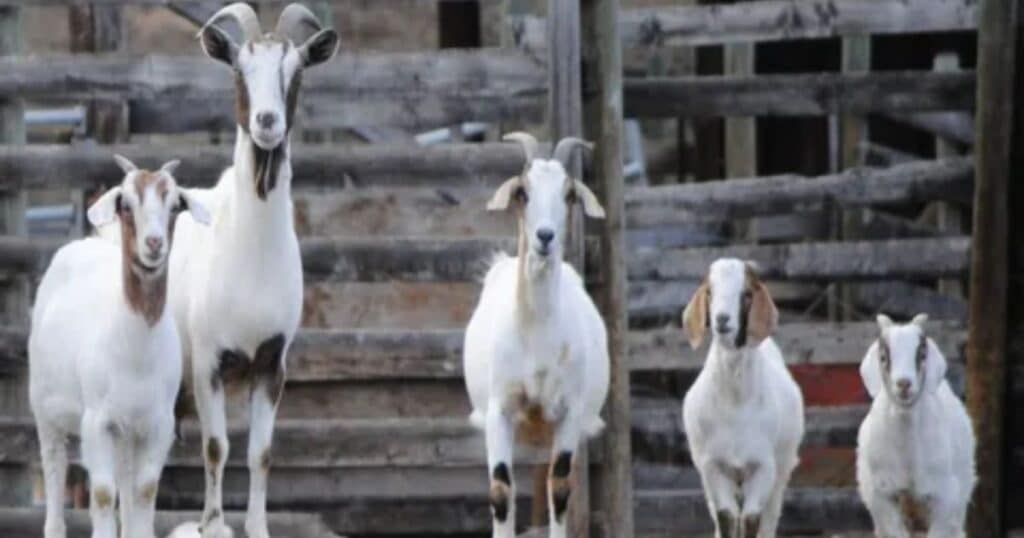
Hold onto your hats, folks, because we’re about to get a little frisky! Goats aren’t just symbols of nourishment, they’re also strongly associated with sexual fertility and virility. Why? Well, let’s just say these animals have quite the reputation in the bedroom… or should we say, the barn?
The Amorous Buck
Male goats, known as bucks, are famous for their, ahem, enthusiastic approach to mating. They’re always ready to go, which has led to goats becoming symbols of virility and sexual energy in many cultures. In fact, the term “horny” is thought to come from the horns of a goat!
This association with male virility is seen in many cultures:
- In ancient Egypt, the god Min, often depicted with the head of a ram (close cousin to the goat), was a symbol of male sexual potency. Festivals in his honor involved the release of a virile goat into the fields, symbolizing the fertility of the land.
- In Greek mythology, the god Pan and his followers, the satyrs, were half-man, half-goat creatures known for their insatiable sexual appetites.
- In Hindu traditions, the god Agni is sometimes depicted riding a goat, symbolizing the fiery energy of both creation and destruction.
The Prolific Doe
But it’s not just about the fellas. Female goats, or does, are known for their ability to have multiple kids (baby goats) in a single birth. This prolific breeding has made goats symbols of fertility and abundance. No wonder they’re associated with spring and new beginnings in many traditions!
In many agricultural societies, the fertility of goats was seen as directly linked to the fertility of the land. A healthy, reproducing herd of goats was a sign of prosperity and divine favor. This connection between goats and fertility of the land is reflected in various spring festivals and rituals around the world.
Goats in Fertility Rituals and Beliefs
The association between goats and fertility has led to their inclusion in various rituals and folk beliefs:
- In some cultures, it’s believed that eating goat meat can increase virility and fertility. While there’s no scientific evidence to back this up, it goes to show how deeply ingrained the association between goats and fertility is in our collective consciousness.
- In ancient Greek weddings, goats were sometimes sacrificed to Hera, the goddess of marriage, to ensure a fruitful union.
- In some parts of Africa, a man might give his bride’s family a goat as part of the wedding ceremony, symbolizing his ability to provide for and produce children with his new wife.
Even in modern times, the connection between goats and fertility persists. While we may not be sacrificing goats to ensure a good harvest anymore, the image of the virile, fertile goat remains a powerful symbol in art, literature, and popular culture.
The Devil
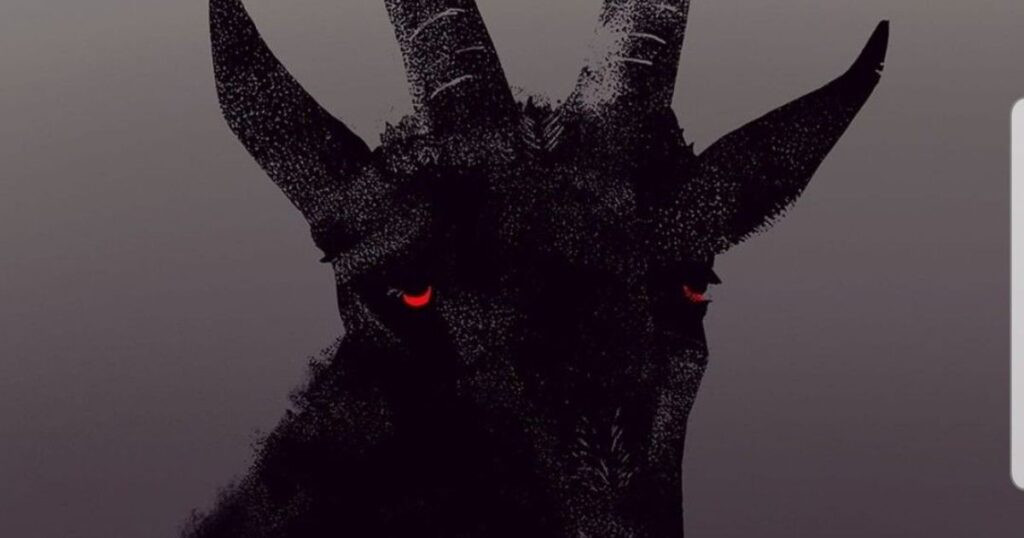
Now, don’t get your goat, but we need to talk about the darker side of goat symbolism. In many Western cultures, particularly in Christian traditions, goats have gotten a bad rap as symbols of the Devil. But how did these innocent farm animals end up with such a devilish reputation?
Read More About : Summer Symbolism in Cultures and Arts Around The World
From Pagan Gods to Christian Devils
It all goes back to ancient times when goats were associated with pagan gods of fertility and nature. As Christianity spread across Europe and the Middle East, these old gods were often recast as demons or evil spirits. The goat, with its horns and sometimes mischievous behavior, became a convenient symbol for everything the church considered sinful or unholy.
This transformation of goat symbolism reflects the broader cultural shifts that occurred as Christianity became the dominant religion in the West:
- Pagan nature gods, often depicted with goat-like features, were reinterpreted as demons.
- The goat’s association with sexuality and fertility, once celebrated in pagan traditions, became linked with lust and sin in Christian theology.
- The independent and sometimes destructive behavior of goats (such as eating crops) was seen as a metaphor for human disobedience to divine law.
The Goat in Medieval Demonology
This association was cemented in the Middle Ages with the image of the Baphomet, a goat-headed deity that became linked with witchcraft and the occult. The Baphomet, often depicted as a winged, goat-headed human with both male and female attributes, became a symbol of everything the medieval church feared and opposed.
During the witch hunts of the 15th to 17th centuries, accusations of devil worship often included claims of ritual interactions with goats. The “Witches’ Sabbath,” a supposed gathering of witches to worship the devil, was frequently described as featuring a large black goat that the witches would kiss and pay homage to.
The Goat in Christian Symbolism
In Christian symbolism, goats are often contrasted with sheep, with sheep representing the righteous and goats representing the damned. This imagery comes from the New Testament, where Jesus uses the metaphor of separating sheep from goats to describe the Last Judgment:
“When the Son of Man comes in his glory, and all the angels with him, he will sit on his glorious throne. All the nations will be gathered before him, and he will separate the people one from another as a shepherd separates the sheep from the goats. He will put the sheep on his right and the goats on his left.” (Matthew 25:31-33)
This powerful metaphor has had a lasting impact on Western culture, reinforcing the association between goats and sin or evil.
Modern Interpretations and Reclamations
Today, you’ll still see goats used in horror movies and Halloween decorations as shorthand for all things spooky and satanic. However, it’s important to note that this negative symbolism isn’t universal.
In recent years, there’s been a movement to reclaim and reinterpret the “devilish” aspects of goat symbolism. Some see the goat’s association with the devil as a symbol of rebellion against oppressive authority or a celebration of natural instincts.
It’s also worth noting that despite the negative connotations in some Christian traditions, goats continue to play important roles in many Christian communities around the world. In many rural areas, goats remain valuable livestock, providing food and livelihood to Christian families just as they do to families of other faiths.
Strength and Resilience
Don’t let their size fool you goats are tough cookies! These nimble creatures can navigate steep mountain slopes with ease, earning them a reputation for strength and resilience. In many cultures, goats symbolize the ability to overcome obstacles and thrive in challenging environments.
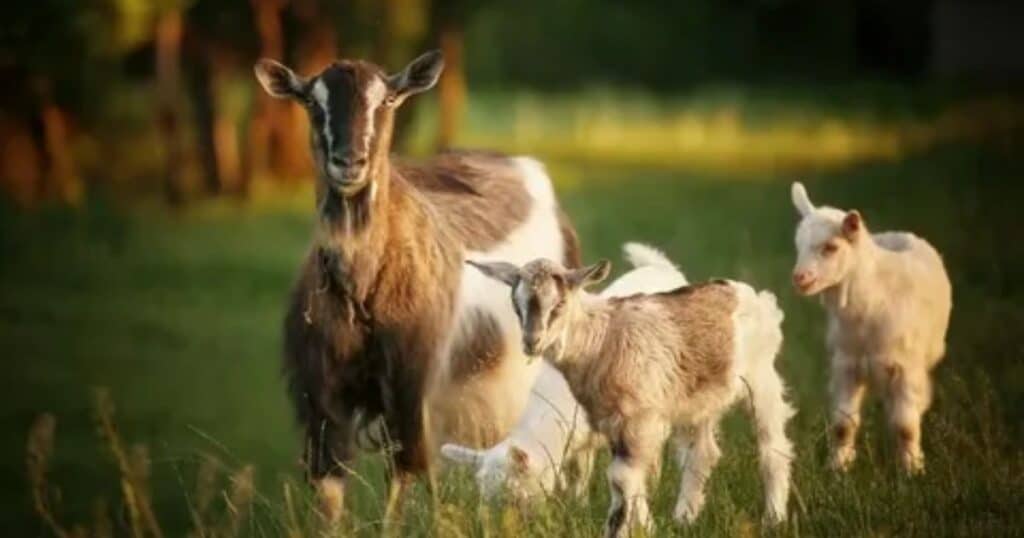
The Mountain Goat: Nature’s Climbing Champion
The mountain goat, with its sure-footed agility and ability to scale nearly vertical cliffs, is a particular source of admiration and symbolism. These remarkable animals can be found in some of the most inhospitable mountainous regions of North America, from Alaska to the Rocky Mountains.
The mountain goat’s physical adaptations are truly impressive:
- Cloven hooves with hard outer edges for grip and soft inner pads for traction
- Powerful legs with well-developed shoulder muscles for climbing
- A low center of gravity and a stocky build that aids in balance
These physical traits, combined with the mountain goat’s fearless approach to scaling sheer cliff faces, have made it a powerful symbol of overcoming adversity and navigating life’s challenges.
Read More About : Trident Symbolism & Meaning: Ultimate Guide
Goat Symbolism in Native American Traditions
In some Native American traditions, the mountain goat is seen as a symbol of surefootedness and the ability to overcome obstacles. They use goat wool in their ceremonial blankets, believing it imparts some of the animal’s strength and resilience to the wearer.
Other Native American tribes associate goats with the following qualities:
- Agility and grace under pressure
- Ability to find sustenance in barren places
- Vigilance and awareness of one’s surroundings
- Independence and self-reliance
These associations reflect the respect that many indigenous cultures have for the goat’s ability to survive and thrive in challenging environments.
The Stubborn Goat
Have you ever heard the phrase “stubborn as a goat”? While it might sound like an insult, it’s actually a nod to the goat’s determined nature. Goats don’t give up easily, whether they’re climbing a mountain or figuring out how to open a gate (much to the frustration of farmers everywhere!).
This stubborn determination has made goats powerful symbols of perseverance and adaptability. They remind us that with a little determination and a lot of sure-footedness, we can overcome any obstacle in our path. So next time you’re facing a challenge, channel your inner mountain goat!
Goats in Modern Symbolism of Achievement
Even in modern popular culture, we see the goat’s strength and resilience celebrated. The term “GOAT” Greatest Of All Time is used to describe exceptional athletes and performers. While this acronym isn’t directly related to the animal, it’s interesting how we’ve chosen the goat to represent the pinnacle of human achievement and resilience.
This modern usage ties back to the ancient symbolism of the goat as a creature of strength and determination. Just as a mountain goat fearlessly scales impossible heights, a human “GOAT” pushes the boundaries of what’s possible in their field.
Examples of individuals dubbed as “GOATS” in their respective fields include:
- Michael Jordan in basketball
- Serena Williams in tennis
- Beyoncé in music
- Albert Einstein in physics
While these modern “GOATs” may not be scaling literal mountains, their achievements and resilience in the face of challenges echo the symbolic strength of their caprine namesakes.
Sacrifice and Atonement
Now, let’s talk about a more solemn aspect of goat symbolism: sacrifice. Throughout history, goats have often been used in religious and ceremonial sacrifices. This practice spans across various cultures and religions, from ancient Greece to Biblical times.
The Concept of Sacrifice in Ancient Cultures
In many ancient cultures, people viewed the act of sacrifice as a way to communicate with the divine, ask for favors, or atone for sins. They often chose animals for sacrifice because of their value, believing that giving up something precious demonstrated devotion or appeased angry gods.
Goats, being valuable livestock that provided milk, meat, and fiber, were often chosen for these rituals. Their sacrifice represented a significant offering, showing the depth of the worshipper’s commitment or the seriousness of their need for divine intervention.
Goat Sacrifice in Different Traditions
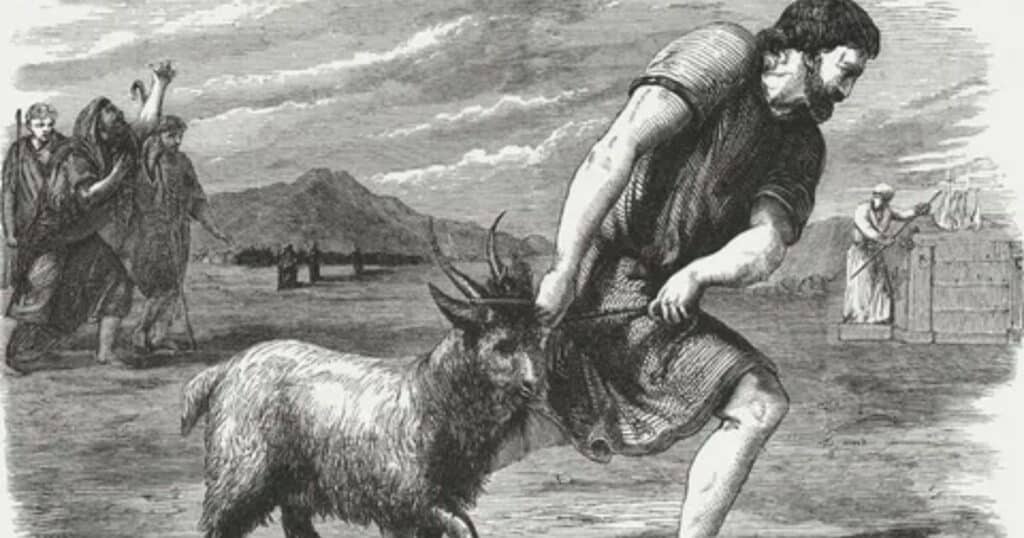
Let’s look at how goat sacrifice has been practiced in various cultures:
- Ancient Greece: Goats were often sacrificed to Apollo, Artemis, and other gods. The ritual was seen as a way to maintain balance between the human and divine realms.
- Hinduism: In some Hindu traditions, goat sacrifices are still performed in temples, particularly those dedicated to the goddess Kali. However, this practice is controversial and many Hindus oppose animal sacrifice.
- Judaism: In ancient Jewish tradition, goats played a crucial role in the Day of Atonement ritual. In ancient rituals, people chose two goats: one was sacrificed to God, while the other, the scapegoat, was released into the wilderness, symbolically carrying away the sins of the people.
- Islam: Although Islam generally prohibits animal sacrifice as a form of worship, Muslims sacrifice goats during the festival of Eid al-Adha, commemorating Abraham’s willingness to sacrifice his son.
- African Traditional Religions: In various African cultures, people perform goat sacrifices for different purposes, such as appeasing ancestors, celebrating important life events, and seeking protection or blessings.
The Scapegoat: A Powerful Symbol
The concept of the scapegoat, which originates from the Jewish Day of Atonement ritual, has had a profound impact on Western culture and language. In the original ritual, a goat would symbolically be laden with the sins of the community and then sent into the wilderness, carrying those sins away.
This powerful symbolism has led to the modern use of the term “scapegoat” to describe someone who is blamed or punished for the wrongdoings of others. The image of the goat in this context represents:
- The burden of guilt or responsibility
- The desire for atonement and cleansing
- The complex relationship between individual and communal sin
The scapegoat concept has been influential in fields ranging from psychology to literature, offering a metaphor for how societies deal with guilt, blame, and the need for purification.
Read More About : Mushroom Symbolism & Meaning: Ultimate Guide
Sacrifice in Modern Context
In most modern societies, literal animal sacrifice is no longer practiced. However, the symbolism of the sacrificial goat continues to resonate in various ways:
- Metaphorical Language: We still use phrases like “sacrificial lamb” or “scapegoat” to describe situations where someone takes on blame or punishment for others.
- Literature and Art: The theme of sacrifice, often drawing on goat symbolism, remains a powerful motif in creative works.
- Psychological Understanding: The concept of scapegoating has been important in understanding group dynamics and how societies deal with conflict and blame.
Today, this symbolism serves more as a reminder of the concept of spiritual sacrifice the idea of giving up something valuable for a higher purpose. So, in a way, goats teach us about the power of selflessness and devotion, even in modern contexts where literal sacrifice is no longer practiced.
6. Goats in the Sign of Capricorn: Celestial Connections
Last but not least, let’s talk about goats in the stars! If you’re into astrology, you might know that the Capricorn zodiac sign is represented by a sea-goat (yes, that’s a goat with a fish tail – nature is wild!).
The Mythology of the Sea-Goat
The sea-goat symbol of Capricorn has its roots in ancient Mesopotamian mythology. The god Enki, associated with wisdom and waters, was often depicted as a creature with the upper body of a goat and the lower body of a fish. This dual nature symbolizes the Capricorn’s ability to navigate both emotional depths (the sea) and ambitious heights (the mountain).
In Greek mythology, this creature is associated with the god Pan, who transformed into a sea-goat to escape the monster Typhon. Some versions of the myth say that when Zeus defeated the Titans and ascended to power, he placed Amalthea (the goat who nursed him as an infant) in the sky as the constellation Capricorn.
Capricorn Traits and Goat Symbolism
Capricorns are known for their ambition, determination, and practicality qualities that align well with their earthy goat symbol. Just as mountain goats climb to great heights, Capricorns are said to be natural leaders, unafraid to strive for the top.
Key Capricorn traits that reflect goat symbolism include:
- Ambition: Like a goat scaling a mountain, Capricorns are known for their drive to succeed.
- Resilience: Capricorns, like goats, are tough and can weather difficult situations.
- Practicality: Goats are pragmatic animals, and Capricorns are known for their practical approach to life.
- Patience: Both goats and Capricorns are willing to take their time to reach their goals.
Capricorn in Modern Astrology
In modern astrology, Capricorn is often associated with career success and leadership. Many notable leaders throughout history have been Capricorns, including Martin Luther King Jr., Benjamin Franklin, and Michelle Obama. These individuals embody the goat-like qualities of persistence obstacles truly the “Greatest Of All Time” in their respective fields!
If you’re a Capricorn, you’ve got some goat-like qualities in you! You’re probably persistent, hardworking, and not afraid to butt heads (pun intended) when necessary. Embrace your inner goat and let it guide you to success!
Goat Symbolism in World Religions
Goats have played significant roles in various world religions, often embodying complex and sometimes contradictory symbolism. Let’s explore how goats are perceived in some major religious traditions.
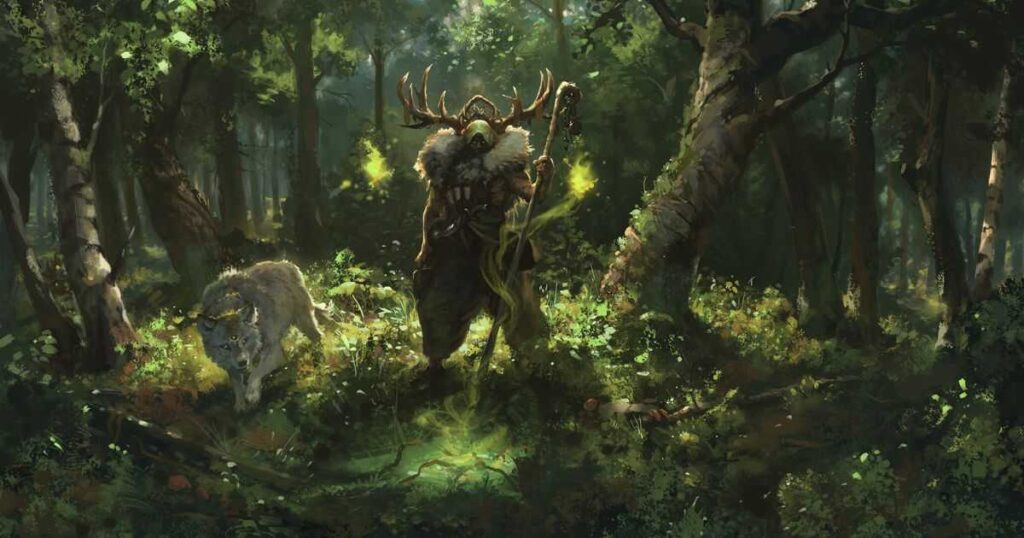
Goat Symbolism in Christianity
When it comes to Christian goat symbolism, it’s a tale of two billies. On one hand, goats often get a bad rap in Christian traditions, associated with sin and the Devil. But on the other hand, they also play some positive roles in Biblical stories.
Read More About : Symbols of Rebirth Across History and Cultures
The Negative Perception
In the New Testament, Jesus uses goats to metaphorically represent the unrighteous who will be separated from the righteous (represented by sheep) on Judgment Day. This parable, found in Matthew 25:31-46, has led some Christian interpretations to view goats as symbols of sin or rebellion against God.
The use of goat imagery to represent evil or sin in Christianity likely has roots in the religion’s pastoral origins. In a shepherd’s flock, goats were often more independent and troublesome than sheep, making them a convenient symbol for waywardness or disobedience.
Positive Aspects of Goats in Christianity
However, it’s not all doom and gloom for our caprine friends in Christianity. Goats were also considered clean animals suitable for sacrifice in the Old Testament. This meant they were seen as valuable offerings to God, symbolizing purity and devotion. Talk about a mixed message!
In the Old Testament, goats were often used in important rituals. The scapegoat ritual on the Day of Atonement, as described in Leviticus 16, involved two goats – one sacrificed to God and the other, the scapegoat, sent into the wilderness carrying the sins of the people.
Goats in Christian Art and Symbolism
In Christian art, goats sometimes appear in depictions of pastoral scenes, particularly those related to the nativity of Jesus. In these contexts, goats are simply part of the humble, earthly setting into which the divine enters – a reminder of Christ’s connection to the everyday world of his time.
Some Christian scholars have also pointed out that the negative symbolism of goats in Christianity might be overemphasized. They argue that both sheep and goats were valuable to shepherds, and that the distinction in the parable is more about behavior than inherent nature. This interpretation suggests that anyone can choose to act righteously, regardless of their “goat-like” or “sheep-like” tendencies.
Despite the often negative connotations, goats in Christianity also symbolize strength and sure-footedness in difficult terrain. Psalm 104:18 praises God’s creation, mentioning that “the high mountains are for the wild goats.” This imagery celebrates the goat’s ability to thrive in challenging environments, a trait that can be seen as analogous to spiritual resilience.
Goat Symbolism in Hinduism
In Hinduism, goats hold a complex and sometimes controversial position, embodying both sacred and sacrificial symbolism.
Goats and Hindu Deities

Several Hindu deities are associated with goats:
- Agni, the god of fire, sometimes rides a goat, symbolizing the goat’s connection to vitality and energy.
- Naigamesha, a goat-headed deity, represents children and childbirth.
- People sometimes depict Daksha, a son of Brahma, with a goat’s head after his resurrection.
These associations highlight the goat’s connection to life force, fertility, and regeneration in Hindu symbolism.
Goats in Hindu Rituals
Goats play a role in various Hindu rituals and practices:
- Sacrificial Offerings: In some traditions, particularly those honoring the goddess Kali, people sacrifice goats as offerings. This practice sparks controversy and is not universally accepted within Hinduism.
- Symbolic Offerings: In many modern Hindu practices, devotees symbolically offer goats instead of performing physical sacrifices.
- Ayurvedic Medicine: Practitioners of Ayurveda use goat milk and other goat products in traditional remedies.
The Controversy of Animal Sacrifice
The practice of animal sacrifice, including goat sacrifice, is a point of debate within Hinduism. Many Hindus argue that ahimsa (non-violence) is a core principle of the religion and that animal sacrifice goes against this teaching. Others defend the practice as a traditional form of worship.
In recent years, there has been a move towards replacing animal sacrifice with vegetable or flower offerings in many Hindu communities, reflecting changing attitudes towards animal welfare.
Read More About : Trident Symbolism & Meaning: Ultimate Guide
Goat Symbolism in Islam
In Islam, goats hold a significant place, particularly in relation to important religious observances and stories.
The Story of Ibrahim and Ismail
One of the most important stories involving a goat in Islamic tradition is that of Ibrahim (Abraham) and his son Ismail (Ishmael). According to the Quran, Allah commanded Ibrahim to sacrifice his son as a test of faith. When Ibrahim demonstrated his willingness to obey, Allah replaced Ismail with a ram (closely related to goats).
This story is commemorated during Eid al-Adha, one of the most important festivals in the Islamic calendar. During this festival, many Muslims sacrifice a goat (or other animal) and share the meat with family, friends, and those in need.
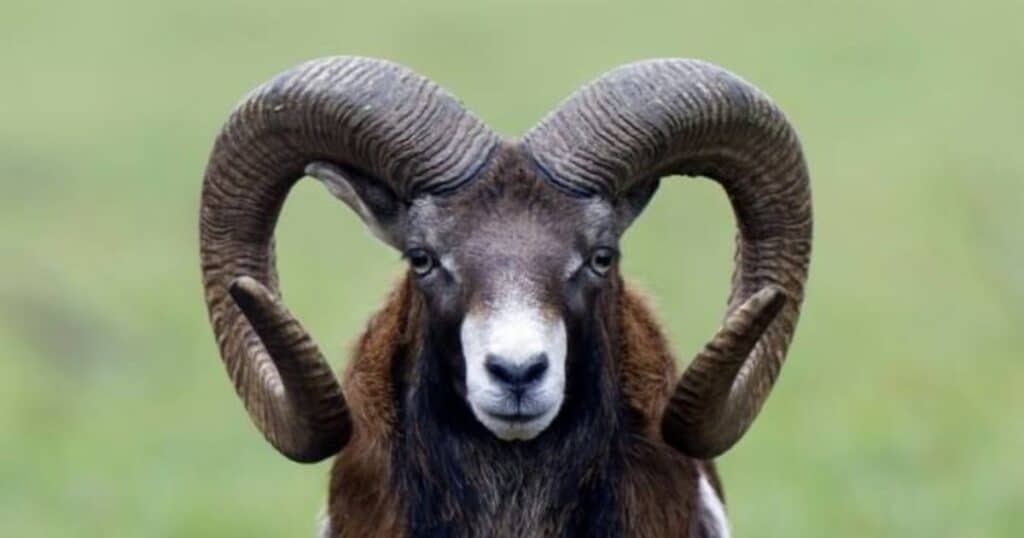
Goats in Islamic Dietary Laws
Goats are considered halal (permissible) for Muslims to eat, provided they are slaughtered according to Islamic law. Goat meat is a popular choice for many Muslims, especially during religious festivals.
Symbolic Meanings
In Islamic culture, goats can symbolize:
- Obedience to Allah: Through the story of Ibrahim and Ismail
- Charity and community: Through the sharing of sacrificial meat
- Sustenance: As a source of food provided by Allah
While goats don’t hold the same level of symbolic significance in Islam as they do in some other religions, they play an important role in religious practice and cultural traditions in many Muslim communities.
Goat Symbolism in Greek and Roman Mythology
Now, let’s hop over to the Mediterranean and dive into the world of Greek and Roman myths. Here, goats prance through stories of gods, heroes, and magical creatures. It’s like a mythological petting zoo!

1. Pan: The Goat-God of Nature
Let’s talk about the big cheese of goat-gods: Pan. Half-man, half-goat, all mischief, Pan was the god of the wild, shepherds, and rustic music. He’s the reason we call sudden fear “panic” legend has it that his shout could cause armies to flee in terror!
Pan symbolized the untamed forces of nature, both its beauty and its dangers. He was a complex figure, capable of both helping and hindering humans. In many ways, Pan embodies the dual nature of goats themselves playful and mischievous, but also potentially dangerous if crossed.
Pan’s Appearance and Attributes
Pan is typically depicted as having:
- The upper body of a man
- The legs and horns of a goat
- A beard
- A syrinx (pan flute) or shepherd’s crook
This hybrid appearance reflects Pan’s nature as a liminal deity, existing at the boundary between the human and animal worlds, between civilization and wilderness.
Pan’s Role in Greek Mythology
Pan’s dual nature as both a helper and a hinderer of humans reflects the Greek understanding of nature as both nurturing and potentially dangerous. As a god of shepherds, he could protect flocks, but as a wild nature god, he could also lead travelers astray. This duality made Pan a fascinating and somewhat unpredictable deity in Greek mythology.

The worship of Pan was particularly strong in rural areas, where his protection was sought for flocks and crops. His famous pan pipes, made from reeds, symbolize the connection between nature and art. The music of Pan was said to inspire creativity but could also drive listeners to ecstatic frenzy.
Read More About : 17 Symbols of Innocence and Their Heartwarming Meanings
The Legacy of Pan
Pan’s influence extends far beyond ancient Greek religion:
- Literature: Pan has inspired countless works of literature, from ancient poetry to modern fantasy novels.
- Psychology: The term “panic” derives from Pan’s name, reflecting his ability to cause sudden, irrational fear.
- Environmental Movements: Some modern pagans and environmentalists have adopted Pan as a symbol of wild nature and resistance to environmental destruction.
- Art: Pan’s distinctive appearance has made him a popular subject in art throughout history.
Interestingly, Pan is one of the few Greek gods said to have died. The Greek historian Plutarch recounted a story in which a sailor heard a divine voice announcing, “Great Pan is dead!” People have interpreted this story in various ways, including as a metaphor for the decline of pagan religion with the rise of Christianity.
2. The Panes: Nature’s Party Animals
Next up, we have the Panes. No, not the glass kind – we’re talking about nature spirits that were half-man, half-goat. These guys were the life of the party in Greek mythology, known for their love of music, dance, and general merriment.
The Panes were followers of Pan (hence their name) and were basically the ancient Greek version of party animals. They symbolized the wild, untamed aspects of nature and the joy of living life to the fullest. So next time you’re dancing like no one’s watching, you’re channeling some serious Panes energy!
Characteristics of the Panes
The Panes shared many characteristics with their patron god, Pan:
- Goat-like lower bodies
- Human upper bodies
- Horns
- A love of music and dance
- Mischievous and playful personalities
In art and literature, artists and writers often depict the Panes playing pipes or chasing nymphs through the forests. They embody the Greek concept of “enthusiasm” literally, being filled with the god.Their goat-like appearance represents their connection to the animal world and the untamed forces of nature.
The Panes in Greek Culture
The Panes played a significant role in ancient Greek religious and cultural life:
- Nature Spirits: They were seen as embodiments of the wild, representing the vitality and unpredictability of nature.
- Agricultural Deities: Farmers and shepherds would often leave offerings for these spirits, hoping to gain their favor and protection for their flocks and crops.
- Inspiration for Art: The Panes were popular subjects in Greek art, particularly in pottery and sculpture.
- Symbolic of Human Nature: The dual nature of the Panes part human, part animal was seen as reflective of humanity’s own dual nature, caught between reason and instinct.
In this way, the Panes symbolize the close relationship between humans and the natural world in ancient Greek culture. They remind us of our own wild nature and the joy that can be found in embracing it.
3. Zeus and the Goat Nurse Amalthea
Even the king of the gods had a soft spot for goats! According to Greek myth, when Zeus was a baby, he was nursed by a magical goat named Amalthea. Talk about divine childcare!
The Myth of Amalthea
The story goes that when Zeus was born, his mother Rhea hid him in a cave on the island of Crete to protect him from his father Cronos, who had a habit of swallowing his children. Amalthea, a magical goat (or in some versions, a nymph who owned a magical goat), was entrusted with nursing and protecting the infant Zeus.
Amalthea wasn’t just any old goat. She had a magic horn that could produce endless food and drink kind of like a mythological vending machine. This horn became known as the cornucopia, a symbol of abundance that we still use today.